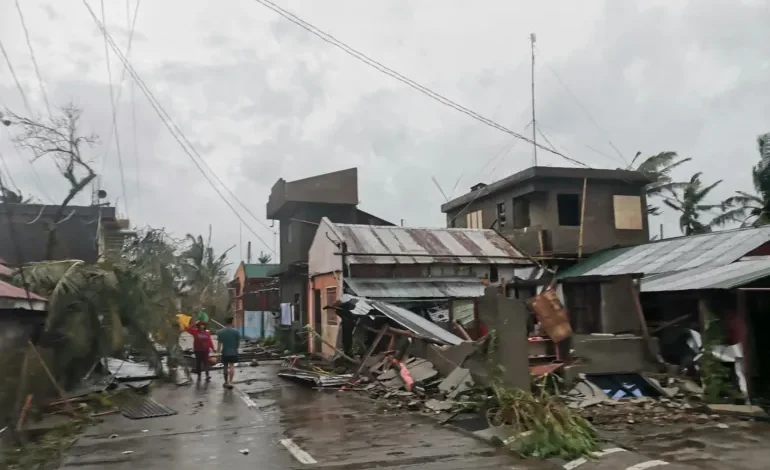Super Typhoon Man-yi fells power lines, causes tidal surges in Philippines

Super Typhoon Man-yi has uprooted trees, bringing down power lines and triggering tidal surges as it threatens to make its second landfall on the northeastern Philippine coast – the sixth major storm to hit the country in less than a month.
As of 3:20 pm (07:20 GMT) on Sunday, Man-yi made its second landfall in the northern province of Aurora.
Ahead of the the landfall, it had maximum sustained winds of up to 185km/h (115mph), according to the national weather agency PAGASA. Its gustiness slightly eased from last night’s 255km/h (158mph) to 230km/h (143mph) on Sunday afternoon.On Saturday night, it slammed into the eastern island province of Catanduanes in central Philippines with sustained winds of up to 195km/h (125mph).
“The rain was minimal, but the wind was very strong and had this eerie howling sound,” Roberto Monterola, a disaster-mitigation officer in Catanduanes, told The Associated Press news agency.
“Along a main boulevard here, the tidal surges went up to more than 7 metres (23 feet) near the seaside houses. It looked really scary.”
Nearly half of the island province’s 80,000 people were sheltering in evacuation centres in advance of Man-yi’s landfall.
In the northern Philippines, more than 750,000 people took refuge in emergency shelters, including churches and a shopping mall, due to Man-yi and two previous storms, according to civil defence official Cesar Idio.
The rare number of back-to-back storms and typhoons that lashed Luzon in just three weeks killed more than 160 people, affected nine million and caused such extensive damage to residential communities, infrastructure and farmlands that the Philippines may have to import more rice, a staple food for most Filipinos.










